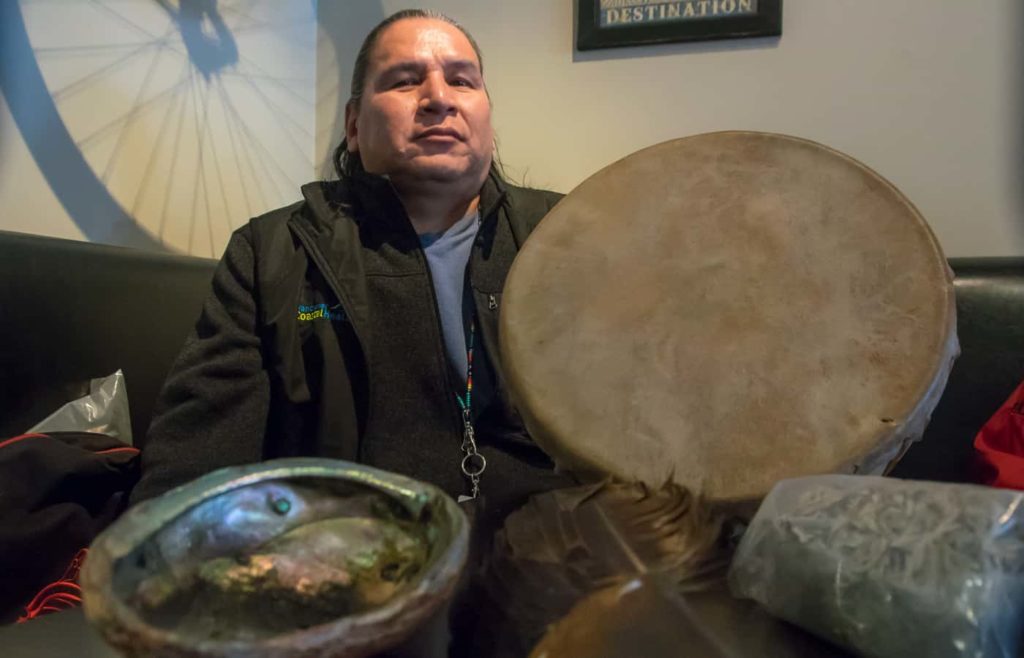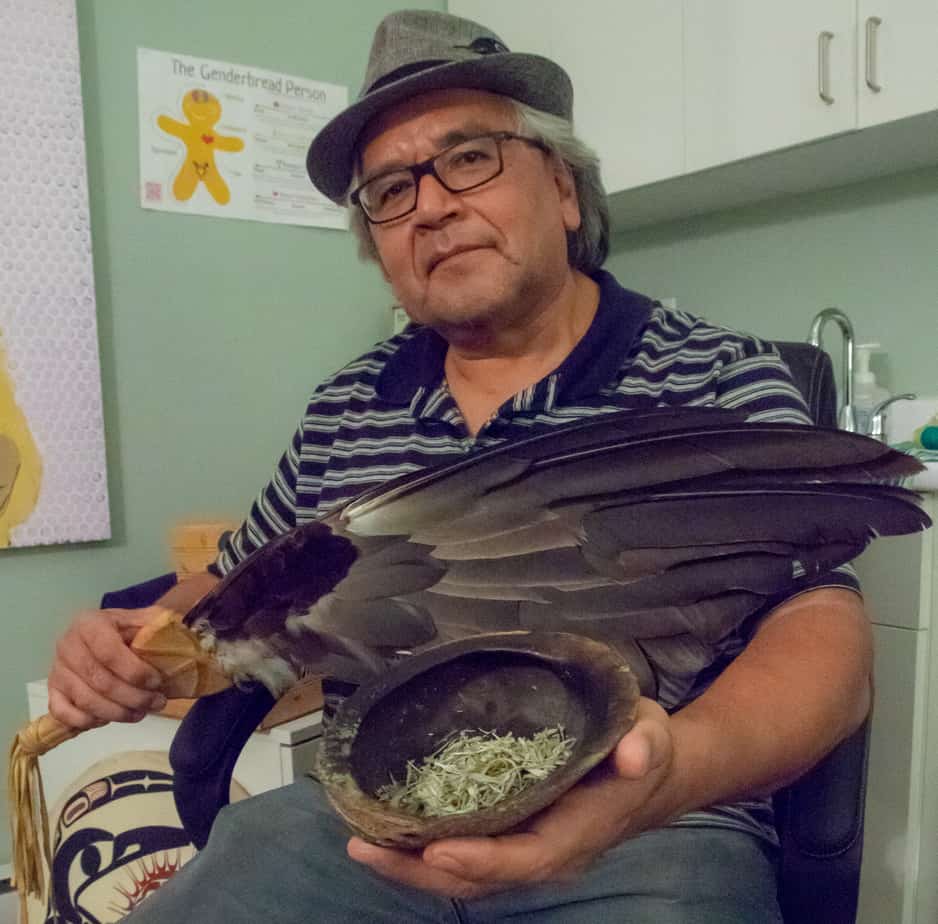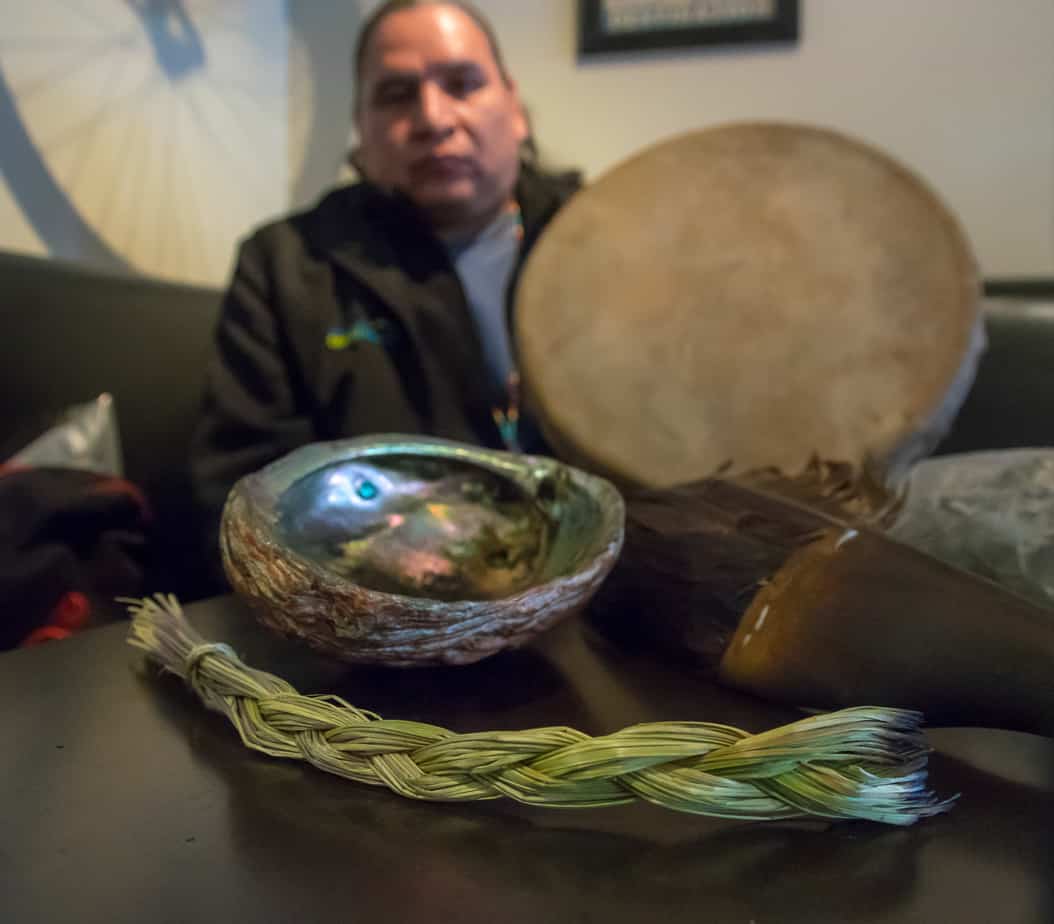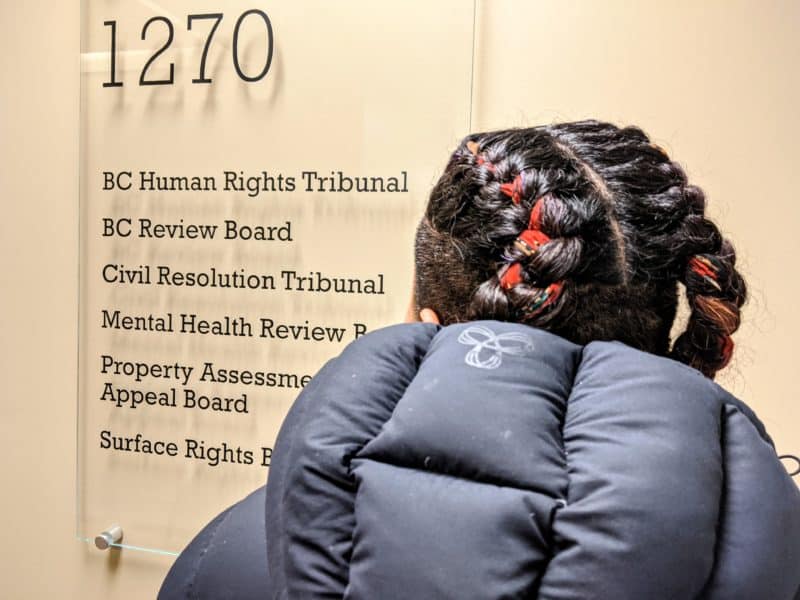
When Bethany Sunday Shortt spent her summer working with Indigenous elders in Vancouver, she found their presence and conversations filled a cultural void that had long plagued her.
As an urban Indigenous teen far from her own nation’s home territory and elders, the opportunity to connect with elders here, in a dedicated space where she could benefit from their companionship and knowledge, was eye-opening.
“We learn everything from our elders, elders are so sacred,” she says.
Now she’s concerned about her peers, many of whom don’t have elders in their lives to help guide them.
“I think that there’s a disconnect between the elders and the youth in our culture,” she says.
“I’ve had the opportunity this summer to connect with a bunch of elders, but most of my peers don’t have that opportunity, so we aren’t learning that knowledge that is supposed to be passed down, that’s supposed to be taught,” she says.
While there are Indigenous elders scattered around B.C.’s sprawling Lower Mainland, the area is vast compared to the small First Nations communities many once lived in. So the opportunities for youth to find and connect with elders are fewer here than back in their tight-knit First Nations, where youth generally grow up knowing their elders and turning to them for advice and spiritual support. For Sunday Shortt, this disconnect in the urban centre raises pressing questions about the impact on youth, and especially on their sense of self and of cultural identity.

Growing up without elders in a white town
Ensconced on the southern end of the Sunshine Coast, Gibsons, B.C. is 46-kilometre car and ferry ride from Vancouver. The Sunshine Coast Tourism website bills Gibsons as “a quaint town of artists and fishing boats.” It also boasts that the town was named among the most liveable towns under 20,000 people in a United Nations-backed competition in 2009.
Gibsons is a world away from Alkali Lake in the B.C. interior, where Sunday Shortt traces her Indigenous roots to the Secwepemc people. Her father (who lives in Sooke, B.C.) didn’t grow up in his traditional territory, though, and until recently Sunday Shortt says she had only a surface awareness of her Indigenous identity.
That didn’t stop her peers from bullying her in Gibsons. “I couldn’t understand why I was different from everyone until I started realizing that it was racially based,” she says. “I got bullied a lot, and the way I figured out how to be okay with that was through learning about my Indigenous heritage and my culture.”
Exacerbating her lack of connection to her Indigeneity was the fact that there are few Indigenous people in Gibsons, something that made her feel more isolated, she says. Demographic data in Statistics Canada’s 2016 census supports her observation. The census notes that of the town’s 9,132 residents, 535 are Aboriginal.
Socially and professionally constrained, Sunday Shortt and her mother moved to Vancouver two years ago. Compared to Gibsons, she found a sea of people here, including Indigenous people and a vibrant Indigenous community.
According to Statistics Canada, 61,455 Indigenous people were counted in Vancouver in 2016. And youth account for a significant share of their population. Across the province, teens aged 14 and under make up a greater percentage of the Indigenous population (25.8 per cent) than the non-Indigenous population (where they account for just 14.5 per cent of the population).
Sunday Shortt’s move to Vancouver came at a time when she was more curious about her identity as an Indigenous person. She’s now in touch with a cousin who was born on the reserve, and she’s trying to reclaim her language, she says. But it was spending a summer working as an intern with elders at the Britannia Community Centre that helped bring her identity into focus.
Through their stories, their advice and just their encouragement, she says, the elders helped her make sense of the new Indigenous world she was seeing and experiencing.
“I was taught about the role of elders in our lives. They have wisdom and knowledge you can’t find in books,” she says.
Scott Clark ran Sunday Shortt’s internship through his organization, Aboriginal Life in Vancouver Enhancement Society (ALIVE). He says it’s important to connect Indigenous elders and youth because it’s “what our folks want and need.”
“Government contracting segregates us on so many levels,” he says. “Contract service providers play into this model.” But elders and youth need to connect, he says. Their disconnection is “inconsistent with our people’s needs and aspirations to feel connected, supportive and supported,” and disrupts their transfer of knowledge and willingness to help others.
‘They’re disconnected from their identities,’ elder says
Bruce Robinson understands the role of elders in the lives of Indigenous youth well.
Known as a healer, the 61-year-old works with Indigenous youth as an elder with the Urban Native Youth Association (UNYA) and as a family support elder with the Vancouver Aboriginal Child and Family Services Society. He provides guidance, spiritual counselling and a keen empathetic ear to the more than 30 youth he’s currently working with in the Lower Mainland.

Robinson says Indigenous girls seek him out for counsel more often than boys. “The girls talk more. They tend to reach out for help when they need it. And sometimes I’m the only healthy male role model in their lives,” he says. “Boys have this toughness and don’t reach out as often.”
Robinson says one of the most important things he does for youth is help them navigate their roots. “When I ask them where they are from, a lot of them will say Vancouver or East Van,” he says. “There’s a disconnect from their villages and their cultures — they’re disconnected from their identities.”
Robinson helps youth trace their cultural identities and he teaches them about the richness of their new worlds, like spiritual practices such as cedar bow and eagle feather brushing, as well as about smudging. “A lot of them are hurting inside, so I always ask them what they do to take care of themselves spiritually,” he says.
There are varying definitions of elders depending who and where you ask, but they have common traits regardless, Robinson says. Elders are the stewards and teachers of an Indigenous community’s history, customs, traditions and ceremonies. They are in effect the transmission line through which this knowledge is passed to youth.
In Indigenous communities, elders are often close by and can be found within families and clans, Robinson says. Today, however, more than 55 per cent of Indigenous people live off reserve, disrupting the transmission line.
In cities, some Indigenous youth have elders in the family nearby. For others, their elders are still healing from the legacy of residential school, or they don’t have elders in their lives at all, and this disconnection can have consequences. “A lot of them are looking for something in their lives but they don’t know what it is yet,” Robinson says.
If the disconnect deepens into a crushing vacuum, the consequences can be tragic. “I’ve been to too many funerals,” he says. “Too many.”
Elders proper have something else in common: they don’t promote themselves as such, and instead are sought because their gravitas is known and respected. Robinson is a testament to this. The outside of his office in UNYA’s ground floor health wing on Hastings Street is nondescript with no sign on the door. Inside his office, the lid of a wooden case with an Indigenous design sits open on a small table, displaying the spiritual implements inside. A poster of the character Thomas from the iconic Indigenous movie Smoke Signals adorns the wall. “I don’t go around telling people I’m an elder. People seek me out as an elder based on word of mouth,” he says.

The path to becoming an elder
Robinson understands urban Indigenous youth at a deeper level because he was once one in his early life.
Originally from the Gingolx community of the Nisga’a Nation in northern, B.C., Robinson has lived in Vancouver since 1971 when he was shipped to Cloverdale with his brother, where he boarded with a family and attended public school. The brothers moved back to Gingolx after their father died a year later, then returned to Vancouver with their mother to live on the city’s east side. “Vancouver became my new village,” he says.
Robinson moved out on his own at age 16, and worked for Ocean Fisheries. He earned his millwright certification to maintain machinery and heavy mechanical equipment, was high on the seniority list and earned a good living for nearly 30 years. He admits to self-medicating after his father’s death, but says he’s been clean and sober for more than 28 years.
Although he moved to Vancouver, Robinson wasn’t completely severed from his culture. His grandparents and uncle were solid elder role models, and he worked with elders from his late first wife’s nation and others in the Lower Mainland, he says. In retrospect, working with elders anchored him to his culture and identity, and gave him a glimpse at what he’d eventually do, only he didn’t know it yet.
In 2012, two dozen Indigenous youth, mostly between the ages of 12 to 15 years old, entered into a suicide pact in East Vancouver. An Indigenous social service agency summoned Robinson and asked him to work with the youth as an elder, and to be part of a team responding to the crisis.
Robinson has since left his job at Ocean Fisheries, and now works as an elder full time. He’s still getting used to his role, and says he doesn’t feel like an elder yet. But, he says, he realizes that being an elder isn’t about being old. “I was taught by listening to elders’ teachings, and you carry it in here,” he says pointing to his chest. “You trust what you have in here and bring it across for others.”

‘I let them know they’re not alone’
Across town near the PNE grounds, Blair Goodwill works for Vancouver Coastal Health as an elder and knowledge keeper with Indigenous children living in support homes.
The youth Goodwill works with are predominantly born and raised urban. Some, he says, don’t realize they’re Indigenous, and he’s their introduction to their identity.
Difficult home lives brought them to living in support homes, he notes. “There’s addiction and abuse issues brought on by intergenerational violence from residential school,” he says. “They’re lost, angry and confused about their identities.”
Those youth whose families come from out of province are particularly uncoupled from their home First Nations’ cultures, something he says he understands.
[factbox_right]
Resources for youth seeking elders:
- Urban Native Youth Association
- Vancouver Coastal Health (Aboriginal Wellness Program)
- Vancouver Aboriginal Friendship Centre Society
- Fraser Regional Aboriginal Friendship Centre Society (My Urban Elder Program)
- Pacific Association of First Nations Women
- Métis Nation BC
- Métis Family Services
[/factbox_right]
The 52-year-old Dakota Sioux came to Vancouver 41 years ago from Fort Qu’Appelle, Saskatchewan with his single mother and younger brother. Before that, he spent six years in residential school. “I didn’t start reconnecting with my culture until later life,” he says.
When he works with youth, Goodwill explains Indigenous culture and traditions, then walks them through ceremonies such as smudging, talking circles, and drumming and singing. The youth can’t digest their new identity in a single sitting, and time, patience and reassurance are critical to reaching them.
“I take my time because I’m building a foundation of trust,” he says. “I let them know they’re not alone, that there’s other youth on the same journey as they are.”
Goodwill likens their journeys to children learning to walk. Children first crawl before standing up and hanging onto something for balance while learning to walk. Eventually, they let go and take their first steps on their own. They’ll fall, but will get up and ultimately walk on their own one day. “This is the beginning of who they are, and the end of who they were,” he says.
Elders are ‘irreplaceable’
At Vancouver’s Technical Secondary School, Bethany Sunday Shortt has just finished her school day. She’s 17 now, and is aiming to graduate from high school this year. She hopes to find a way to combine grassroots activism with art, she says.
Sunday Shortt is on the cusp of adulthood, and she’s found strength in her Indigenous identity, something she links back to her summer with Indigenous elders at the Britannia Community Centre, where she still works. She’s maintained connections to elders there, and has reached out to others in her East Vancouver community.
“It felt good to have positive role models that I never had in my life before,” she says.
Prior to her internship last summer, Sunday Shortt says she had preconceived ideas about what elders were — that they were serious, old-fashioned and didn’t have fun. But getting to know them taught her differently.
Indigenous youth who are seeking out their identities should seek out elders in community centres, elders groups and in their communities, Sunday Shortt suggests. “They’re valuable, and are irreplaceable by anyone else,” she says.[end]
This piece was edited by Robin Perelle. Sign up here for our Urban Nation newsletter.



